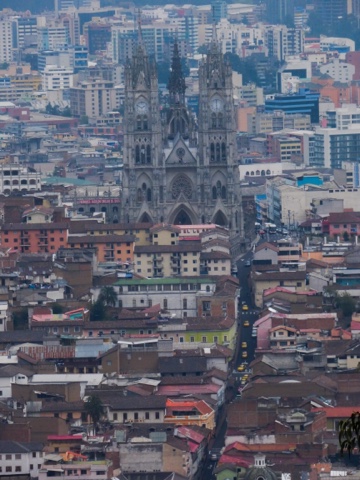Today has been interesting. I had forgotten that on Sundays they close a number of streets to cars and create an enormous network of bicycle paths.
I decided to take the trolley bus to an enormous archeological site that predates the Incas, and I think goes back to 10,000BC. Although one goes past where I am staying, it wasn't the one I needed, and I couldn't work out how to get from one to the other, so I decided to walk. The street was one of the ones closed to cars, and there were an enormous number of cyclists, despite it being Sunday morning. With the help of several people, I found the right stop to get on. The bus was very crowded so I went too far, and somehow I lost all my paper money. It didn't really matter - where I was going was free, and the bus fare was 25 cents, which I still had, and I didn't have anything but glasses, money and camera (the buses are renouned for pickpockets, so I took only what I needed for today). The archeological park was closed because "it is a big mess", and the museum ( which was small but good), was difficult to get to because the road to it was ripped up. I took a photo of the street trees in that area - do they look familiar?
Lunch was one of the soups the Ecuadorians do so well, but again it was advertised as beef with legumes. It certainly had beef, and lots of vegetables, but none of them were legumes.
On the way back from the archeological site I heard the worst brass band yet. I think it was the municipal police band, giving a performance outside the theatre. They were even worse than the bands in Banos. Maybe the Ecuadorians should stick to pan pipes which they play very well, or at least give brass a miss. I also heard a school band playing percussion and what may have been xylophones when I went to the Basilica. They were very good, even if they were making an incredible amount of noise.























































